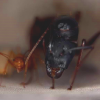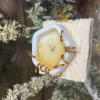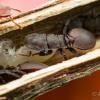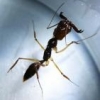Hello y'all,
I'm going down to Brownsville, TX soon to go on an intense anting trip to find Neoponera villosa and I was wondering if their is an easy way to identify the difference from a worker and a queen quickly in the field. Also, If required, I could put what I think is a queen in a test tube and pull out my macro lens rq to identify her, but if there is a faster way to do this please let me know.
Edit: also I need to know how to id her
Edited by AntsTx, September 20 2024 - 6:14 PM.




















